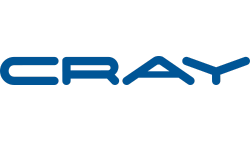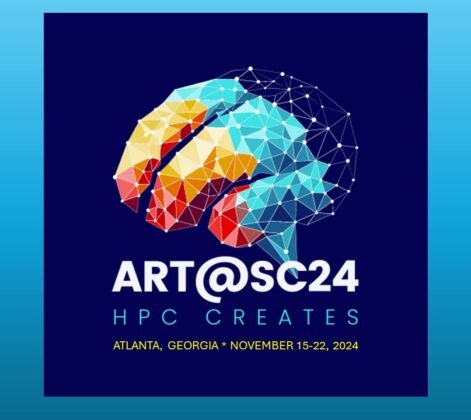May 19, 2017 update: Thanks to the International Supercomputing Conference, STEM-Trek, Cray, Inc. and others, Umesh Upadhyaya will attend ISC in June (his visa was granted on May 31)!
Original story by Nages Sieslack (ISC) published by HPCwire on April 20, 2017
Umesh Upadhyaya works as an IT Associate at the International Centre for Integrated Mountain Development (ICIMOD) in Nepal, which supports the country’s one and only HPC facility. He is directly involved in an initiative that focuses on climate change and atmosphere modeling, an area that has particular relevance to the country’s dependence on its agricultural production and hydroelectric power.
Part of what Umesh wants to accomplish at ICIMOD is acquiring the necessary technical skills so that he can assist research scientists in setting up and supporting HPC resources at the Nepal facility. Unfortunately, at this point the government doesn’t have the funds to allocate for training or workshops to help him acquire such skills.
The conference organizers for ISC High Performance became aware of his plight and are offering Umesh free registration for the tutorials, the conference and workshops at this year’s conference in June. STEM-Trek, a non-profit group that supports professional development for individuals from under-served regions who are trying to establish themselves in the HPC workforce, is trying to help him secure travel funding. The hope is that an ISC exhibitor will come forward to help sponsor his trip to Frankfurt, Germany.
ISC’s Nages Sieslack recently got an opportunity to speak with Umesh about his work, ICIMOD’s mission, and what he would like to achieve if he could attend the ISC conference this year.
Why are you interested in attending ISC 2017?
Umesh Upadhyaya: Scientific computing is such an exciting realm of technology and there is a severe lack of skills in Nepal in this particular area. By attending the ISC 2017, I would have the opportunity to network with academics, researchers, and representatives from industry and bring in a lot of experience to my organization via interactions in the various workshops, tutorials and conference sessions.
The ISC 2017 platform will also help me learn about advancements in infrastructure design, state-of-the-art hardware, breakthroughs in computational sciences, and the latest use cases of HPC.
Can you tell us a bit about ICIMOD and its purpose?
Umesh: The International Centre for Integrated Mountain Development is a regional intergovernmental learning and knowledge-sharing center, based in Kathmandu, Nepal. It serves the eight regional member countries of the Hindu Kush Himalayas – Afghanistan, Bangladesh, Bhutan, China, India, Myanmar, Nepal, and Pakistan. ICIMOD aims to assist mountain people to understand changes to their environment, adapt to them, and make the most of new opportunities, while also addressing upstream-downstream issues.
ICIMOD supports transboundary programs through partnership with regional partner institutions, facilitates the exchange of experience, and serve as a regional knowledge hub. It also strengthens networking among regional and global centers of excellence. Overall, we are working to develop an economically and environmentally sound mountain ecosystem to improve the living standards of local populations and to sustain vital services for the billions of people living downstream now, and in the future.
 Can you describe your center’s current HPC capabilities?
Can you describe your center’s current HPC capabilities?
Umesh: The High-Performance Center provides a unique ability to access the latest systems, CPUs, and networking technologies. ICIMOD has installed and is operating a high performance computing cluster based on Dell blade servers equipped with Intel Xeon processors. The center hosts a Linux environment and is specifically used for atmosphere modeling. Air quality scientists currently run the latest version of WRF, WRF-Chem, and STEM etc. in this HPC environment. The in-house Dell blade servers and storage system comprises 160 cores, 512 GB of memory and 100 TB of disk storage.
ICIMOD High-Performance Center also offers an environment for developing, testing, benchmarking and optimizing software. The center provides on-site technical support and enables secure sessions locally or remotely.
What kind of research are you and your project involved in, and how do you use HPC at the center?
Umesh: The cluster is currently available to ICIMOD scientists and PhD fellows for academic and research purposes, especially those related to weather and pollution models. The modeling software is currently supported by the GCC, Intel and PGI compilers.
I am working with research scientists to determine and compare run times of WRF v3.8 compiled with gfortran versus commercial Intel and PGI compilers. Currently, ICIMOD uses MPICH2 and gfortran for multi-CPU runs for WRF v3.8 in a multi-clustered environment, and recently we subscribed to PGI and Intel compilers. All our compute nodes are bare metal and have low-latency interconnects for better parallel processing performance. My research emphasis is on the performance of WRF on different software compilers using our 160-core Dell cluster.
What would you like to achieve by attending ISC 2017?
Umesh: Attending ISC 2017 would be a professionally rewarding experience for someone like me, who is beginning his career in HPC. Sharing the same space with attendees at ISC will help me engage with the larger HPC community and hopefully return with new ideas that make me more effective at my work. Overall, I believe the conference will inspire me to grow and challenge myself in many areas of HPC.
Many thanks to Cray and others who helped make it possible for Umesh to attend ISC. He could use more support for meals and ground transit, if anyone else can help. Please write to info@stem-trek.org.






A great opportunity to learn and network. Thank you Stem-Trek for making this possible.